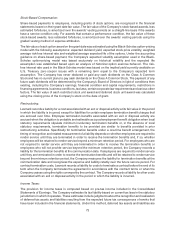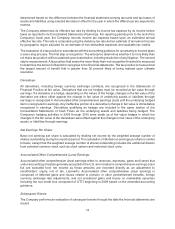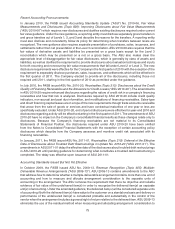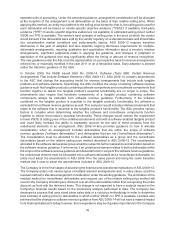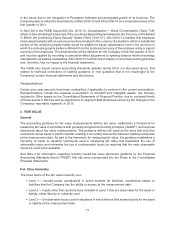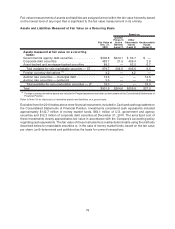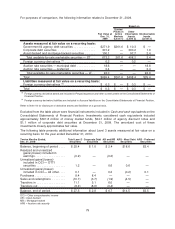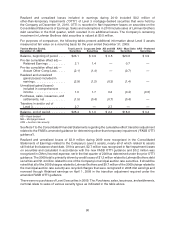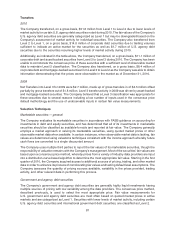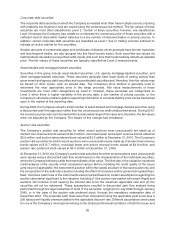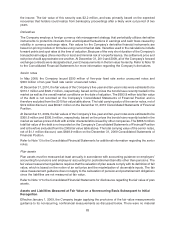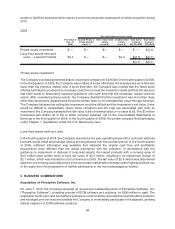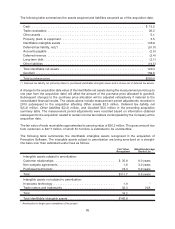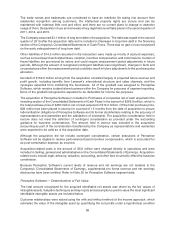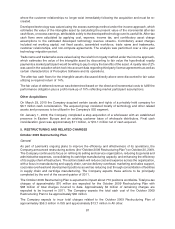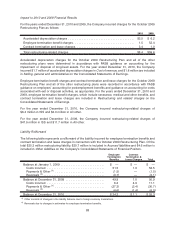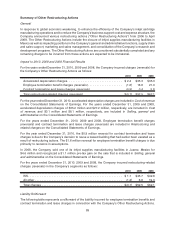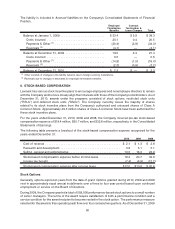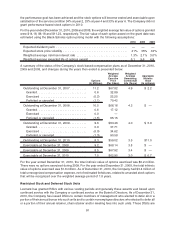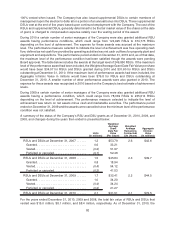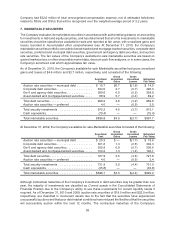Lexmark 2010 Annual Report Download - page 89
Download and view the complete annual report
Please find page 89 of the 2010 Lexmark annual report below. You can navigate through the pages in the report by either clicking on the pages listed below, or by using the keyword search tool below to find specific information within the annual report.the insurer. The fair value of this security was $2.2 million, and was primarily based on the expected
recoveries that holders could realize from bankruptcy proceedings after a likely work out period of two
years.
Derivatives
The Company employs a foreign currency risk management strategy that periodically utilizes derivative
instruments to protect its interests from unanticipated fluctuations in earnings and cash flows caused by
volatility in currency exchange rates. Fair values for the Company’s derivative financial instruments are
based on pricing models or formulas using current market data. Variables used in the calculations include
forward points and spot rates at the time of valuation. Because of the very short duration of the Company’s
transactional hedges (three months or less) and minimal risk of nonperformance, the settlement price and
exit price should approximate one another. At December 31, 2010 and 2009, all of the Company’s forward
exchange contracts were designated as Level 2 measurements in the fair value hierarchy. Refer to Note 18
to the Consolidated Financial Statements for more information regarding the Company’s derivatives.
Senior notes
In May 2008, the Company issued $350 million of five-year fixed rate senior unsecured notes and
$300 million of ten-year fixed rate senior unsecured notes.
At December 31, 2010, the fair values of the Company’s five-year and ten-year notes were estimated to be
$373.1 million and $320.7 million, respectively, based on the prices the bonds have recently traded in the
market as well as the overall market conditions on the date of valuation. The $693.8 million total fair value
of the debt is not recorded on the Company’s Consolidated Statements of Financial Position and is
therefore excluded from the 2010 fair value table above. The total carrying value of the senior notes, net of
$0.9 million discount, was $649.1 million on the December 31, 2010 Consolidated Statements of Financial
Position.
At December 31, 2009, the fair values of the Company’s five-year and ten-year notes were estimated to be
$360.5 million and $306.0 million, respectively, based on the prices the bonds have recently traded in the
market as well as prices of debt with similar characteristics issued by other companies. The $666.5 million
total fair value of the debt is not recorded on the Company’s Consolidated Statements of Financial Position
and is therefore excluded from the 2009 fair value table above. The total carrying value of the senior notes,
net of $1.1 million discount, was $648.9 million on the December 31, 2009 Consolidated Statements of
Financial Position.
Refer to Note 13 to the Consolidated Financial Statements for additional information regarding the senior
notes.
Plan assets
Plan assets must be measured at least annually in accordance with accounting guidance on employers’
accounting for pensions and employers’ accounting for postretirement benefits other than pensions. The
fair value measurement guidance requires that the valuation of plan assets comply with its definition of fair
value, which is based on the notion of an exit price and the maximization of observable inputs. The fair
value measurement guidance does not apply to the calculation of pension and postretirement obligations
since the liabilities are not measured at fair value.
Refer to Note 17 to the Consolidated Financial Statements for disclosures regarding the fair value of plan
assets.
Assets and Liabilities Measured at Fair Value on a Nonrecurring Basis Subsequent to Initial
Recognition
Effective January 1, 2009, the Company began applying the provisions of the fair value measurements
guidance to its nonrecurring, nonfinancial measurements as discussed below. There were no material
83


